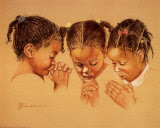POST
NO BILL
By
Wilhelmina S. Orozco
It
is very rare to see an assembly of artworks with one theme, seeing art in
everyday experiences and objects in our lives. Yet we have it and marvel at how
the many artists have shaped, reshaped and transformed ordinary-looking objects
into works of art.
You
see, everyday, when we go out of our homes, we are deluged with posters and
billboards enticing us to consume this and that. We are in effect a bill-fed
people as can be gleamed from the broad avenues of Makati to the simple narrow streets of
Sampaloc. Not even the spaces between streets are spared – so many streamers
greeting graduates, wishing the people happiness in this and that occasion can
be found. Billboards advertising this and that object or that service
proliferate and multiply in great abandon, the local governments neatly and
strangely quiet about this advertising invasion of their territories.
In
this exhibit, what we would normally consider as litter meant for the bins are
given a make-over. For example, a billboard picked up in L.A. has been transformed into an artwork
with a new, relevant and contemporary meaning in it- hands in different
poses. Looking more closely, we will
find they depict the sign language of “peace.” Now what is the purpose in this
muted expression of “peace?” Instead of a mouth screming and shouting “PEACE!”,
the hands speak the mantra “speech is silver and silence is gold.”
Other
objects that have been transformed include bottles of different sizes and
shapes, vehicle tires beyond repair, newspaper pages, toilet bowls, signages,
talon calendars with holy figures, as well as shredded Philippine bills. For
another example, tires are laid out in a circle like a wheel of fortune. Why
tires, we ask. That is because tires should be moving us from one destination
to another.
Then
newspapers once we have read, we throw away or sell to the “Diyaryo-bote”
scavenger. However a front page banner headline is cut up, magnified and placed
under a lens serving in effect a new purpose. It has become the most significant issue of the day, this
headline:”Nawalan ng delicadeza.” The artist has put forward his own view of
politics.
Now
the TV advertisintg world is wrapped up in so many ads enticing us to drink
this and that label. But an art installation shows us another view – drinking
is not limited to liquor but to harder stuff like shabu – most of the time to
forget. Thus, a small corner contains a TV set and in front of it several
bottles wrapped in paper.
In
another piece, chairs wrapped in paper are actually toilet bowls serving as
seats for the audience viewing a mélange of dire images dished out by
commercial film companies. One could feel like eliminating in the face of
“s---” being dished out by the screen.
A
“Welcome” sign not only urges the people to come, but also sees to remind us
comically about what could be found in Baguio City: blind curves, narrow roads,
a hundred traffic policemen who could jail you due to even the minutest
infraction in the coldest jail in Luzon.”
Bottles
have their labels removed and then various cut-outs of a face, the head of an
animal with horns, a woman’s behind as well as land formations become the new
contents. Why bottles? We bottle up our memories of people and places we
encounter in life.
A
calendar4 of holy figures has been cut up and then woven with the artist’s own
painting and now includes graphics of Mickey Mouse and Donald Duck as well as
farmers’ scenes, hence telling us that our life as a people is a mishmash of
cultural icons that seem to be clashing yet which we tolerate side by side with
or even on top of each other.
S
piece with the shape of four crosses or what could be pieces in a puzzle seems
too ordinary to be attended to. Actually when magnified the crosses are
actually made up of shredded bank notes. And when you see through the lens then
the questions arise” “whom” and “what do you worship?”
Vivarium,
a puzzle at first glance is just a plain salvaged welcome signboard to a
subdivision. Sawdusts have been shaped into roads and landmap of a subdivision.
In the center is a peephole – voila!—you see the original, idyllic setting of
the place full of greenry. Where is it now
The
works of Santiago Bose, Mark Justiniani, Joy Mallari, Alfredo Esquillo, Ling
Quisumbing Ramillo Alwin Reamillo, Leo Abaya, Francis Commeyne, and Ioannis
Sicuya, are featured.
“Post
No Bill” Exhibit was put up by Tin-Aw Art Gallery
in partnership with Manila Contemporary located at the Whitespace 2314 Pasong
Tamo Extension, Makati
City. Runs from March 17
to April 25, 2012.






No comments:
Post a Comment